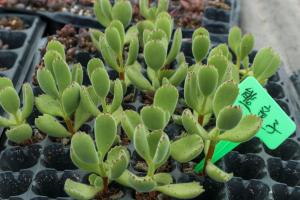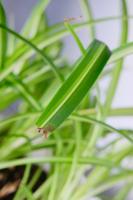Do You Cut Back Tomato Plants?
Tomatoes are a popular vegetable to grow in home gardens because they are easy to maintain and produce a high yield. However, knowing when and how to prune your tomato plants can make a big difference in how well they grow and produce fruit. In this article, we will discuss whether or not you should cut back tomato plants and the best techniques for doing so.
Why Should You Cut Back Tomato Plants?
One of the main reasons that gardeners cut back tomato plants is to encourage more fruit production. When the plant's energy is focused on producing leaves and growing branches, it takes away from the energy that is needed to produce fruit. By cutting back the plant, you are redirecting the energy to the parts of the plant that you want to grow, which is the fruit.
Additionally, cutting back tomato plants can help to prevent disease and pests. When plants are allowed to grow wild, they can become overcrowded and lead to airflow issues, creating a breeding ground for disease and insects. By cutting back the plant, you can create more space and promote better airflow, reducing the risk of disease and pest infestations.
When Should You Cut Back Tomato Plants?
The best time to cut back tomato plants is when they are young and small. This allows you to shape and direct the plant's growth in the way that you want it to go, making it easier to manage and control. However, if your tomato plant has already grown large, you can still cut it back, but you must be careful not to remove too much at once, as this can cause shock and damage to the plant.
It's also important to note that certain varieties of tomato plants, such as determinate varieties, do not need to be cut back as they have a predetermined limit to their growth. On the other hand, indeterminate varieties will continue to grow and produce fruit until the end of the growing season, making them good candidates for cutting back.
How Do You Cut Back Tomato Plants?
The first step to cutting back tomato plants is to remove any suckers that are growing in between the main stem and branches. Suckers are small shoots that grow from the joint of the main stem and a branch. By removing these suckers, you are funneling the plant's energy into the main stem and branches, promoting better fruit production.
Next, you should remove any dead, diseased, or damaged leaves or branches. This helps to prevent the spread of disease and pests and allows the plant to focus its energy on growing healthy branches and producing fruit. You may also want to remove any leaves that are blocking light from reaching the lower parts of the plant, as this can hinder fruit production.
If your tomato plant has grown too large, you may need to prune the branches back to a manageable size. It's important to not remove more than one-third of the plant at any given time to avoid causing shock and damage to the plant. Also, avoid cutting too close to the main stem or leaving a large stub as this can lead to disease and pest issues.
Conclusion
Knowing when and how to cut back tomato plants is essential for promoting healthy growth and abundant fruit production. By removing suckers, dead or damaged branches, and pruning the plant back to a manageable size, you can encourage the plant to put its energy into producing fruit and prevent disease and pest issues. Remember to be gentle when cutting back your tomato plant and avoid removing too much at once to ensure its continued health and vitality.

 how many times do yo...
how many times do yo... how many planted tre...
how many planted tre... how many pine trees ...
how many pine trees ... how many pecan trees...
how many pecan trees... how many plants comp...
how many plants comp... how many plants can ...
how many plants can ... how many plants and ...
how many plants and ... how many pepper plan...
how many pepper plan...































